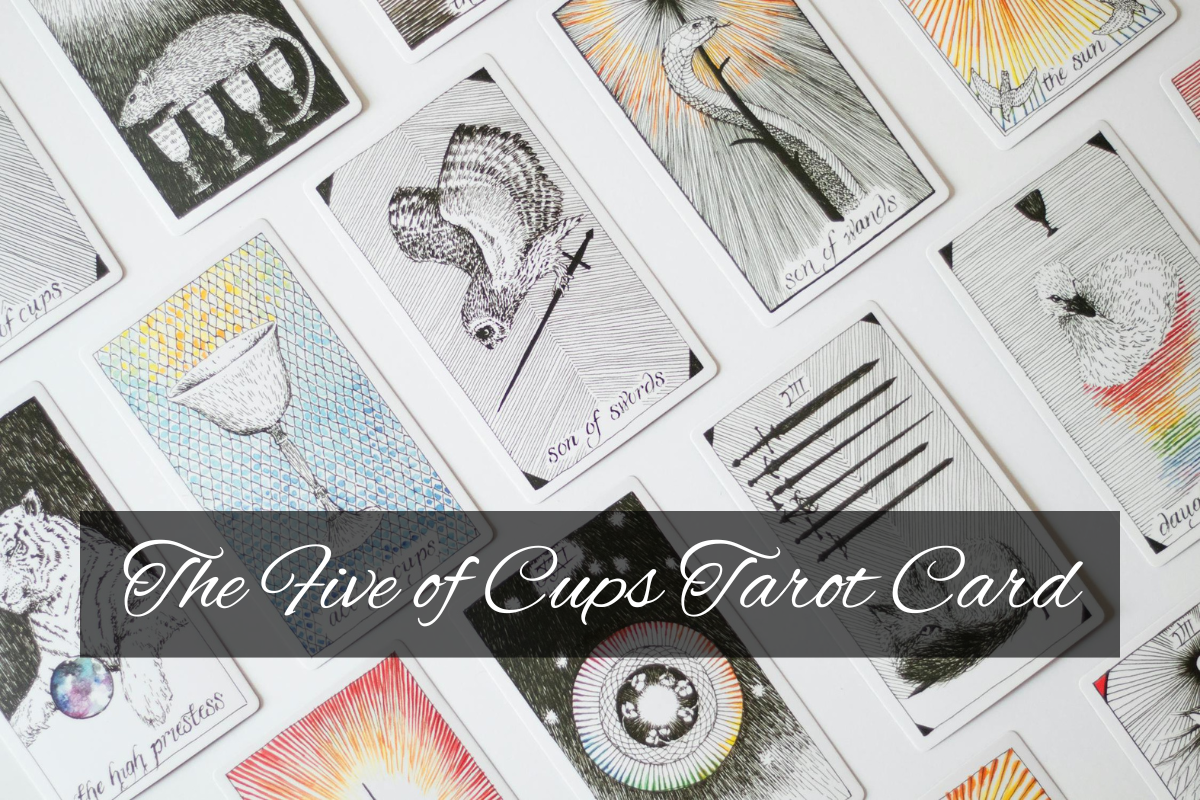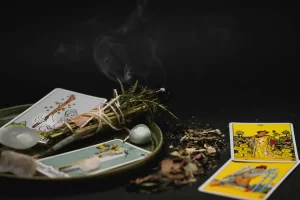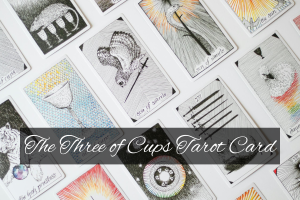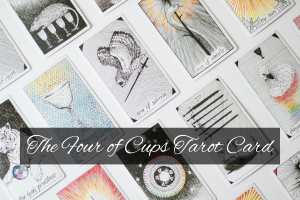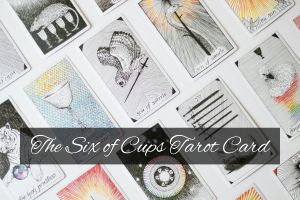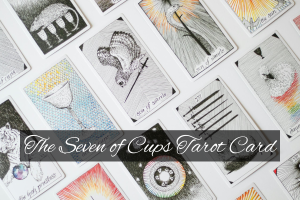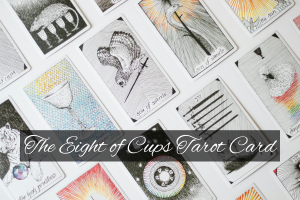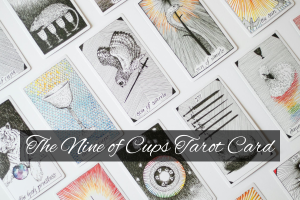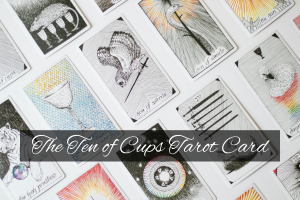The Tarot deck, with its 78 cards weaving a rich narrative of human experience, serves as a timeless guide to our emotional, spiritual, and relational journeys. Within the Minor Arcana, the Five of Cups emerges as a poignant and complex card, steeped in themes of sorrow and redemption. Belonging to the suit of Cups—associated with water, emotions, intuition, and relationships—this card confronts us with the raw reality of loss while subtly pointing toward hope.
In this article, we will undertake a comprehensive exploration of the Five of Cups, tracing its historical origins, dissecting its evocative symbolism, unpackinging its layered meanings, and reflecting on its role in contemporary Tarot practice. By the end, you’ll gain a deep understanding of this card’s emotional depth and its significance in navigating life’s inevitable challenges.
Historical Context of the Tarot and the Suit of Cups
To fully appreciate the Five of Cups, we must first situate it within the broader history of the Tarot. The Tarot’s roots stretch back to 14th- and 15th-century Europe, where it debuted as a card game in Italy, exemplified by decks like the Visconti-Sforza. Originally a form of entertainment, the Tarot evolved into a divinatory tool by the 18th century, propelled by occultists like Antoine Court de Gébelin and Jean-Baptiste Alliette (Etteilla), who imbued it with mystical and symbolic weight.
The Minor Arcana’s four suits parallel traditional playing cards, with cups corresponding to Hearts. Governed by the element of water, the Cups suit encapsulates emotions, intuition, and the relational sphere. Historically, cups or chalices have symbolized emotional abundance, spiritual nourishment, and communal rites—think of the Holy Grail or the cauldrons of Celtic myth. The numbered cards within the suit trace an emotional arc, and the Fives often signify disruption, conflict, or a turning point after the stability of the Fours.
The Five of Cups inherits this legacy as a card of emotional upheaval, capturing the tension between despair and the faint glimmer of recovery—a theme that resonates through its imagery and interpretations.
Symbolism of the Five of Cups in the Rider-Waite Deck
The Rider-Waite Tarot deck, illustrated by Pamela Colman Smith under Arthur Edward Waite’s direction and published in 1909, offers the most iconic portrayal of the Five of Cups. Its somber imagery provides a vivid entry point for understanding the card’s meaning.
In this depiction, a cloaked figure stands with head bowed, gazing at three golden chalices that lie spilled before them, their contents soaking into the earth. Behind the figure, two upright chalices remain unnoticed. A river flows nearby, separating the figure from a distant castle or home, while a bridge spans the water, suggesting a path forward. The sky is gray, amplifying the mood of melancholy.
The symbolism is striking and multifaceted:
- The Cloaked Figure: Draped in black, the figure embodies mourning, regret, or emotional withdrawal. Their focus on the spilled cups suggests fixation on loss.
- The Three Spilled Chalices: These represent what has been lost—relationships, opportunities, or emotional investments—now irretrievable.
- The Two Upright Chalices: Positioned behind the figure, these cups symbolize hope, resilience, or remaining resources, overlooked in the shadow of grief.
- The River: A barrier of emotion, it reflects the inner turmoil that distances the figure from stability (the castle). Water ties to the suit’s theme of feelings.
- The Bridge: A subtle promise of passage, it hints at the possibility of moving beyond sorrow.
- The Castle: A symbol of security or home, it lies out of reach, underscoring the figure’s isolation.
- The Gray Sky: It mirrors the emotional weight, casting a pall over the scene.
Together, these elements frame the Five of Cups as a card of loss tempered by potential—a tableau of sorrow that quietly urges the viewer to turn and see what remains.
General Meaning of the Five of Cups
At its core, the Five of Cups embodies the pain of loss and the struggle to move forward. It often appears when the seeker is grappling with regret, disappointment, or grief, fixated on what’s gone rather than what still endures. When this card surfaces in a reading, it signals a time of emotional reckoning—a confrontation with sorrow that also carries the seeds of healing.
In its most poignant light, the Five of Cups validates the depth of human feeling, honoring the need to mourn. It’s the ache of a breakup, the sting of a missed chance, or the weight of a past mistake. Yet, its upright chalices whisper of resilience—there is still something worth salvaging, if only the seeker can shift their gaze. The card challenges us to balance grieving with gratitude, acknowledging loss while embracing possibility.
Upright vs. Reversed Interpretations
The orientation of the Five of Cups alters its message, offering distinct perspectives in upright and reversed positions.
Upright Five of Cups
When upright, the Five of Cups emphasizes sorrow and fixation on the past. Its key meanings include:
- Loss: Emotional or relational setbacks—a breakup, betrayal, or failure.
- Regret: Dwelling on what could have been or self-blame.
- Despair: A focus on what’s gone, overshadowing what remains.
- Isolation: Feeling cut off from hope or support.
In a reading, the upright Five of Cups might reflect mourning a loved one, lamenting a career misstep, or replaying “what ifs.” It’s a card of “if only”—urging the seeker to process their pain.
Reversed Five of Cups
Reversed, the Five of Cups signals a turning point toward recovery. Possible interpretations include:
- Healing: Acceptance of loss and a shift toward hope.
- Perspective: Recognizing the upright chalices—finding value in what remains.
- Reconnection: Mending ties or returning to stability.
- Stagnation: Conversely, clinging to grief despite opportunities to move on.
The reversed card can indicate letting go of regret or, less favorably, a reluctance to release the past. It’s a pivot from mourning to renewal—or a warning against lingering too long.
The Five of Cups in Different Reading Contexts
The Five of Cups adapts its meaning to the question or spread, providing tailored insights. Here’s how it might manifest:
- Love and Relationships: Upright, it’s heartbreak or longing for a lost connection. Reversed, it suggests reconciliation or moving on.
- Career: Upright, it indicates a professional setback or disappointment. Reversed, it might mean finding new motivation or salvaging a project.
- Personal Growth: Upright, it’s a phase of emotional processing. Reversed, it’s embracing resilience.
- Spirituality: Upright, it reflects a crisis of faith or spiritual loss. Reversed, it signals renewed trust or insight.
In a past-present-future spread, the Five of Cups in the “past” position might recall a defining loss, while in the “future” position, it could predict a need to face sorrow ahead.
The Five of Cups in Combination with Other Cards
The Five of Cups interacts with surrounding cards to enrich the story. Here are some pairings:
- With The Tower: Catastrophic loss followed by forced renewal.
- With The Star: Hope emerging from despair.
- With the Three of Cups: Joy overshadowed by lingering sadness—or celebration as a remedy.
- With The Hermit: Introspection deepening after loss.
- With The Sun: Light breaking through grief.
These combinations position the Five of Cups as an emotional hinge, amplifying themes of sorrow or redemption.
Psychological and Archetypal Perspectives
Psychologically, the Five of Cups aligns with the stages of grief—particularly denial or depression—where focus narrows to loss. From a Jungian view, it might represent the shadow’s dominance, obscuring the light of the Self until integration begins. It’s a card of the psyche in mourning, poised for transformation.
Archetypally, the Five of Cups evokes the “Wounded Healer” or “Mourner”—seen in figures like Niobe weeping for her children or Orpheus lamenting Eurydice. It’s the descent before ascent, the dark valley before the bridge is crossed.
The Five of Cups in Modern Tarot Practice
In contemporary Tarot, the Five of Cups resonates with modern experiences—grieving in an age of constant change, processing collective loss, or finding hope amid personal struggles. Practitioners often tie it to therapy, self-compassion, and the journey from victimhood to empowerment.
Modern decks reinterpret it—like the Modern Witch Tarot’s figure staring at spilled wine, with two glasses still full—yet its essence of loss and recovery persists. It’s a staple in discussions of resilience, appearing in wellness blogs and Tarot circles as a symbol of navigating life’s lows.
Practical Applications: Engaging with the Five of Cups
For those drawn to the Five of Cups, it offers practical ways to work with its energy:
- Meditation: Visualize the upright chalices glowing, drawing focus to hope.
- Journaling: Write about a loss and what still remains to cherish.
- Ritual: Pour water from three cups, then refill two, symbolizing release and renewal.
- Affirmation: “I honor my grief and embrace what endures.”
In readings, ask: “What am I mourning?” or “What can I turn toward now?” The card becomes a guide through shadow to light.
Cultural and Artistic Influence
The Five of Cups inspires art and narrative—from paintings of mourners to songs of heartbreak and redemption. Its imagery fuels poetry about sorrow’s lessons and films of quiet recovery, marking it as a cultural emblem of human fragility and strength.
Conclusion: The Tender Promise of the Five of Cups
The Five of Cups is a tender, bittersweet call—to feel the weight of loss, to linger in regret, but also to turn and see the chalices still standing. Whether it signals grief, reflection, or the cusp of healing, it reminds us that pain and hope coexist. Its symbolism, rooted in tradition and reimagined for today, speaks to our universal wrestle with impermanence.
To draw the Five of Cups is to stand by the river, cloak heavy, bridge in sight. The choice to cross is yours—and in that choice lies its quiet power.
